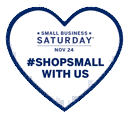The Evolution of Hair Color Trends: From Past to Present
If we made you guess how long we’ve been coloring our hair, we doubt you’d go back far enough. It turns out we’ve always loved expressing ourselves by mixing up the color of our locks because we’ve been doing it since 1500 BC. That’s right, in ancient Egypt, they were using henna to cover up grey hair, and in Greece and Rome, they were using plants and leeches (we wish we were joking) to create black hair dye. For a while, we stuck with black and dark red shades, mostly from henna, until the Saxons started burning plants and nuts and using the ashes to get bolder colors such as yellow. They used these colors to intimidate their enemies in battle, so try and embody that confidence the next time you dye your hair.
Natural red hair was viewed suspiciously when it first started to become common in Scotland after the Dark Ages, but once Queen Elizabeth the First took the throne with her shock of bright red hair, it helped it be seen more favorably. Members of higher society even began trying to recreate it on their own hair.
There were no more significant advancements in hair color trends until 1863. An English scientist named William Henry Perkin was attempting to find a cure for malaria and accidentally ended up with mauve dye, which came to be used on hair. The dye was called Mauveine. It’s not dramatic to say it changed the world of hair color forever, as shortly after the discovery, Perkins’ professor isolated a color-changing molecule called PPD in the dye, which is still the base of most permanent hair dyes made.
The Importance of Advertising
Perkins’ incredible discovery opened the door to commercial hair dye, and then movies and advertising combined to propel the market into what it has become today. The first commercial dye was made in 1907 by the founder of what became L’Oreal, and demand soared. Shortly after, in the 1930s, platinum blonde was modelled by Jean Harlow in a film of the same name. Fans of the film rushed to salons to copy the iconic look, and there was even a cash prize of $10,000 offered by Jean Harlow’s publicist if a salon could match her shade exactly.
In 1950, the founder of Clairol created a one-step blonde dye that could be done easily at home and didn’t require bleaching and reducing the damage that could be caused. This caused a surge in at-home dye kits, and by 1968, Americans no longer had to state their hair color on their passports because the chance of it changing was so high.
In the 1970s and 1980s, celebrities began to endorse hair color brands in advertisements. This not only boosted sales but also helped shift the perspective from coloring secretly at home to being honest about your coloring choices.
Recent Changes to Color Treatments
Since the 1980s, celebrity endorsements have continued, salon and home dye offerings have improved, and as of 2015, more than half of American women colored their hair. Hair dyes became kinder to hair, focusing on hair health and not just color. When lockdown hit, box dye sales went through the roof, and many people experimented with bold fun colors while they were bored, although we’re sure there were a few bleach incidents.
Color trends and preferences now change faster than ever, thanks to social media and new brands and techniques entering the dye game and at Indulge Salon we’re excited to see what comes next. Read more about our bespoke color service.




